Books by Melis Oğuz Çevik
Design'da Fahri Profesördür. Sanoff, elli yıldan fazladır araştırma ve profesyonel uygulamalarda ... more Design'da Fahri Profesördür. Sanoff, elli yıldan fazladır araştırma ve profesyonel uygulamalarda yer almıştır. Pek çok makalesi ve 'Community Participation in Design and Planning', 'Democratic Design', 'Visual Research Methods in Design', ' Integrating Programming Evaluation and Participation in Design', 'Methods of Architectural Programming', 'Seeing the Environment', ve 'Design Games' adlı kitaplarıyla tanınmaktadır. Bu kitapların bazıları Japonca, Korece ve Rusça gibi başka dillere de çevrilmiştir. Araştırmaları, okul tesisleri, çocuk ortamları, topluluk sanatları, topluluk canlandırma ve yaşlanan nüfus alanlarında yoğunlaşmıştır. Profesör Sanoff, ABD'de ve yurtdışında 85'ten fazla kurumda,
Cumhuriyerin Göçlerle Dolu 100 Yılı: 100 Başlıkta Göç Yazıları, 2023

Kriz, 2022
During the pandemia, curfews temporarily closed businesses and white-collar jobs with the flexibi... more During the pandemia, curfews temporarily closed businesses and white-collar jobs with the flexibility to work from home slowed down the speed of urban life and increased the time spent in dwellings, and the significance of public places regained prominence. This study tries to understand how much the relationship of users experiencing pandemia
with the public and private places as spaces of living and experience were ready for such a trauma. Thus, the primary parameter used in this study is the urban interface defining merging points between the dwelling and the public space. The study tries to evaluate the design criteria of the dwelling regarding form and function, where the user is compliant and the space is adaptable, together with the public space setup which should play an integral and complementary role. The study acknowledges the temporality of the crisis situation experienced at the time the article is written and opens the definitions about private and public space to criticism and discussion based on the personal experiences of the researchers. Regarding compliance and adaptability this article tries to offer a definition of urban interface, which is an intermediate scale in which both architecture and planning disciplines ought to work together.
Improving the Everyday, Extending the Centre, 2014

Disiplinlerarası Yaklaşımla Çocuk Hakları (Çocuk Hakları Eğitimine Yönelik Uygulama Örnekleriyle), 2020
Bu çalışma, pandemi öncesi süreçte çocuğun kentsel alandaki sıkışmışlığına bir pencere açmak hay... more Bu çalışma, pandemi öncesi süreçte çocuğun kentsel alandaki sıkışmışlığına bir pencere açmak hayaliyle ortaya çıkan bir proje deneyimini değerlendirmektedir. Proje, önce çocuğu kentle tanıştırmaya,
ardından çocuğun kente aidiyeti için kentle bağ kurmasına yönelik geliştirilmiş bir dizi eğitim, öğretim ve deneyimsel aktiviteyi içermiştir. Bir senelik deneysel bir “kent okulu” niteliği taşıyan proje, 120 çocukla yola çıkmış ve bir senenin sonunda yaklaşık 60 çocuğu bu okuldan mezun etmiştir. Bu projeden ortaya çıkan sonuçlar, katılımcı çocuklar ve ebeveynleri tarafından oldukça olumlayıcı ve proje ekibini ve destekleyicilerini ise etkileyici olmuştur. Çocukların kentle kendi seviyelerinde karşılaşmaları ve içinde yaşadıkları kenti öğrenirken kendileri ve ötekini, yani katılımcı diğer çocukları keşfetmeye başlamalarının sonucunda çocuklarda aidiyet ve sorumluluk bilincinin geliştiği ve sürecin çocukları haklarını bilen birer kentli bireye evirdiği görülmüştür. Her aşaması, hem proje ekibini heyecanlandırmış,
hem de proje katılımcısı çocukların hayatlarına hatırda kalır bir dokunuş olmuştur. Bu deneyimin sonuçlarının, kentsel alan planlaması, yönetimi ve planların uygulanmasında, çocukları da kentin önemli ve vazgeçilmez bir unsuru olarak kabul eden çalışmaların artması adına bir ışık tutacağı düşünülmektedir.
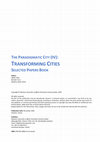
THE PARADIGMATIC CITY (IV): TRANSFORMING CITIES-SELECTED PAPERS BOOK, 2020
This paper asks whether urban morphology shapes people’s relationship to their own garbage. As pe... more This paper asks whether urban morphology shapes people’s relationship to their own garbage. As people’s relationship to the street (or the street level) is curtailed, their relationship to garbage may become detached. Taking garbage as a value in circulation, the paper tries to understand how subjects relate to garbage from the moment of determining an object as garbage to its successive steps. The key concepts here are alienation versus visibility (of garbage) both of which may help understand people’s systematic alienation from garbage and its circulation. Therefore, the first part of the paper draws a theoretical frame from which the authors evaluate the findings of an online survey. As a preliminary part of a long run research, in the context of this paper, this online survey consisted of two parts: the first part intended to acquire information about people’s neighborhoods (and the urban morphology), while the second part was directed at understanding their relationship to garbage and its disposal.
The research findings show that it is possible to draw a connection between urban morphology and people’s practice of garbage disposal. People living in a house tend to know more about successive steps of garbage collection and thereby are more likely to practice recycling. The complex and mixed urban morphologies of Turkey call for more specific research on the issue. The subsequent steps of this research will include more information about the participants’ backgrounds. This may be accompanied by concentrating on a particular area, enriched with more data about official and informal waste management practices, so that a more efficient garbage circulation may be pictured and theorized.

New Cinema, New Media: Reinventing Turkish Cinema, 2014
This volume covers approaches concerning the relationship between innovation in cinema and the po... more This volume covers approaches concerning the relationship between innovation in cinema and the politics of filmmaking in new cinema practices in Turkey. The contributors focus on historiography, genres, mainstream and art cinema production, and transnational cinema, as well as changing narratives and identities. The new cinema movement in Turkey is here analysed from perspectives of new technologies, new production and distribution structures, the impact of film training, the televisual industry, new actors in commercial and art cinema, as well as the impact of the film festival circuit. Additionally, recurring themes of memory, trauma, and identity are dealt with from multidisciplinary angles. The volume covers in depth analyses of the internationally renowned filmmakers Nuri Bilge Ceylan, Fatih Akın, Semih Kaplanoğlu, Reha Erdem, Zeki Demirkubuz, Yeşim Ustaoğlu and Derviş Zaim. A timely study on the centenary of Turkish cinema in 2014, students of Middle Eastern Studies, Film Studies, Cultural Studies, Urban Studies, Gender Studies, and Identity Studies will find this volume extremely relevant to their work.

There have been various efforts by scholars, urban planners, policy makers, local civil society o... more There have been various efforts by scholars, urban planners, policy makers, local civil society organizations, community groups, non-governmental organizations, as well as local governmental bodies to better grasp the complex processes of neoliberal urbanization. These efforts became even more complex as neoliberal ideas and policy frameworks became deeply entrenched into local and national urban practices.
So far, discontents on neoliberal urbanization have often been characterized as contestations to neoliberal policies. We believe that it is now a critical time to engage with these processes in neoliberal times as they reveal unexpected articulations, intersections and compositions in political ideas, institutions/actors and interests. Thus, the deconstruction of the concept neoliberal urbanization as well as all the concepts and problematic areas related to it need to have inputs from various disciplines not only from those specialized in urban studies.
The commonality of contributions in this book will pertain to both developing and developed country contexts in a comparative perspective. It is therefore our task to identify eclectic spatial forms on urban spaces and unpack the controversies experienced by societies. We strongly believe that these two tasks will be of crucial importance on shedding light on the design and implementation of urban policies in both developed and developing countries.
Papers by Melis Oğuz Çevik
The concept of sustainability should be significantly integrated into practice as well as into co... more The concept of sustainability should be significantly integrated into practice as well as into contemporary urbanism principles as innovative technological approaches for designing the future cities of 21 st century. A green certification can be accepted as an essential Anahtar sözcükler: Sürdürülebilirlik; sürdürülebilir kentsel yerleşme; Türkiye; yeşil yerleşme sertifikasyonu.

Planlama dergisi, 2019
2 It is important to note the pickup system of the fare in a minibüs. The passenger directly reac... more 2 It is important to note the pickup system of the fare in a minibüs. The passenger directly reaches out the fare as cash to the driver and gets the change back. If the driver is not within accessible reach, the passenger may ask other passengers to pass on the fare for him/her. As the fare is not constant for the whole ride, passengers need to pay the fare by calling out their destination stop. While doing this, there might be more than one passenger handing on the fare, so spontaneously and instantly the cash which is being handed on gets labelled by (1) the amount of the banknote (such as "Change of 100 TL", "Change of 50 TL", etc.), (2) the name of the destination (such as "Change of Kadıköy", "Change of Bostancı" etc.), (3) a characteristic feature of the passenger, as in the case of the participant's narrative. 3 Here, in the Turkish narrative the participant was referring to callings of co-passengers as "Bayanın ücreti! Ablanın ücreti!" Paratransit systems are so culturally indigenous that bare translations lose a lot of sub textual meaning, as shown by focus group study narratives. Therefore, some wordings such as minibüs have not been translated. 4 A neighborhood scale coffee shop, which only appeals to men of the neighborhood and is a very dominant patriarchal character. 5 Shanty houses in Turkey.
XIX ISA World Congress of Sociology (July 15-21, 2018), Jul 18, 2018
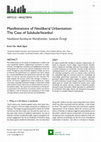
Planlama dergisi, 2013
This study focuses on the spaces of neoliberalism in Istanbul and more specifically Sulukule neig... more This study focuses on the spaces of neoliberalism in Istanbul and more specifically Sulukule neighborhood constitutes its empirical focus. The hegemonic ascendancy of neoliberalism encounters contestations and social unrest, political mobilizations across the world. Through the case of Sulukule (Istanbul, Turkey), our aim is to illustrate how gentrification as a neoliberal instrument utilized by a conservative/Islamist local government intervene the urban space not only for economic purposes but also culturally. This study analyzes this process, which went through in Sulukule, a former low-income neighborhood, mainly inhabited by a Gypsy community, sustaining livelihoods through an historically created entertainment culture, which was not welcomed by the conservative political cadres. This study turns the attention to the dynamics generated at the interstices of economy, politics and society, and delivers a tale of resistance and contestation to the uneasy marriage between conservative Islamism and neoliberalism.
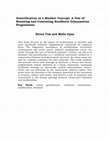
RePEc: Research Papers in Economics, Sep 1, 2011
This study focuses on the spaces of neoliberalism in Istanbul and more specifically Sulukule neig... more This study focuses on the spaces of neoliberalism in Istanbul and more specifically Sulukule neighborhood constitutes its empirical focus. The hegemonic ascendancy of neoliberalism encounters contestations and social unrest, political mobilizations across the world. Through the case of Sulukule (Istanbul, Turkey), our aim is to illustrate how gentrification as a neoliberal instrument utilized by a conservative/Islamist local government intervene the urban space not only for economic purposes but also culturally. This study analyzes this process, which went through in Sulukule, a former low-income neighborhood, mainly inhabited by a Gypsy community, sustaining livelihoods through an historically created entertainment culture, which was not welcomed by the conservative political cadres. This study turns the attention to the dynamics generated at the interstices of economy, politics and society, and delivers a tale of resistance and contestation to the uneasy marriage between conservative Islamism and neoliberalism.
x and grandmother, Hamiyet Albayrak, for their ongoing love, support, and patience during the har... more x and grandmother, Hamiyet Albayrak, for their ongoing love, support, and patience during the hard periods of my life. My friends, Şule Yaylacı, Aylin Şentürk, Bahar Asena Soydaş, and Melis Kanturvardar Tütenyurd have always been with me through all my difficult times and tolerated all my weak moments. Moreover, my thanks go to all the migrant women, experts, academics, and institutional representatives who have helped me to find the information that I needed, and who furthermore, spent their time, and genuinely responded to all my questions. Finally, I acknowledge the financial support I have gained while undertaking all the field studies. The field study in Berlin was supported by DAAD (Deutscher Akademischer Austauschdienst) and the field study in Istanbul was financed by Scientific Research Fund

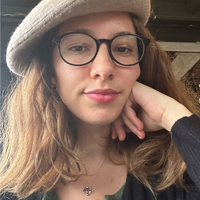




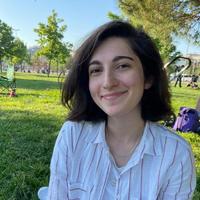

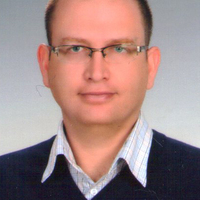
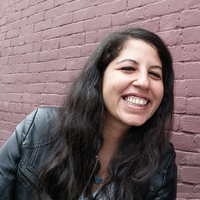

Uploads
Books by Melis Oğuz Çevik
with the public and private places as spaces of living and experience were ready for such a trauma. Thus, the primary parameter used in this study is the urban interface defining merging points between the dwelling and the public space. The study tries to evaluate the design criteria of the dwelling regarding form and function, where the user is compliant and the space is adaptable, together with the public space setup which should play an integral and complementary role. The study acknowledges the temporality of the crisis situation experienced at the time the article is written and opens the definitions about private and public space to criticism and discussion based on the personal experiences of the researchers. Regarding compliance and adaptability this article tries to offer a definition of urban interface, which is an intermediate scale in which both architecture and planning disciplines ought to work together.
ardından çocuğun kente aidiyeti için kentle bağ kurmasına yönelik geliştirilmiş bir dizi eğitim, öğretim ve deneyimsel aktiviteyi içermiştir. Bir senelik deneysel bir “kent okulu” niteliği taşıyan proje, 120 çocukla yola çıkmış ve bir senenin sonunda yaklaşık 60 çocuğu bu okuldan mezun etmiştir. Bu projeden ortaya çıkan sonuçlar, katılımcı çocuklar ve ebeveynleri tarafından oldukça olumlayıcı ve proje ekibini ve destekleyicilerini ise etkileyici olmuştur. Çocukların kentle kendi seviyelerinde karşılaşmaları ve içinde yaşadıkları kenti öğrenirken kendileri ve ötekini, yani katılımcı diğer çocukları keşfetmeye başlamalarının sonucunda çocuklarda aidiyet ve sorumluluk bilincinin geliştiği ve sürecin çocukları haklarını bilen birer kentli bireye evirdiği görülmüştür. Her aşaması, hem proje ekibini heyecanlandırmış,
hem de proje katılımcısı çocukların hayatlarına hatırda kalır bir dokunuş olmuştur. Bu deneyimin sonuçlarının, kentsel alan planlaması, yönetimi ve planların uygulanmasında, çocukları da kentin önemli ve vazgeçilmez bir unsuru olarak kabul eden çalışmaların artması adına bir ışık tutacağı düşünülmektedir.
The research findings show that it is possible to draw a connection between urban morphology and people’s practice of garbage disposal. People living in a house tend to know more about successive steps of garbage collection and thereby are more likely to practice recycling. The complex and mixed urban morphologies of Turkey call for more specific research on the issue. The subsequent steps of this research will include more information about the participants’ backgrounds. This may be accompanied by concentrating on a particular area, enriched with more data about official and informal waste management practices, so that a more efficient garbage circulation may be pictured and theorized.
So far, discontents on neoliberal urbanization have often been characterized as contestations to neoliberal policies. We believe that it is now a critical time to engage with these processes in neoliberal times as they reveal unexpected articulations, intersections and compositions in political ideas, institutions/actors and interests. Thus, the deconstruction of the concept neoliberal urbanization as well as all the concepts and problematic areas related to it need to have inputs from various disciplines not only from those specialized in urban studies.
The commonality of contributions in this book will pertain to both developing and developed country contexts in a comparative perspective. It is therefore our task to identify eclectic spatial forms on urban spaces and unpack the controversies experienced by societies. We strongly believe that these two tasks will be of crucial importance on shedding light on the design and implementation of urban policies in both developed and developing countries.
Papers by Melis Oğuz Çevik
with the public and private places as spaces of living and experience were ready for such a trauma. Thus, the primary parameter used in this study is the urban interface defining merging points between the dwelling and the public space. The study tries to evaluate the design criteria of the dwelling regarding form and function, where the user is compliant and the space is adaptable, together with the public space setup which should play an integral and complementary role. The study acknowledges the temporality of the crisis situation experienced at the time the article is written and opens the definitions about private and public space to criticism and discussion based on the personal experiences of the researchers. Regarding compliance and adaptability this article tries to offer a definition of urban interface, which is an intermediate scale in which both architecture and planning disciplines ought to work together.
ardından çocuğun kente aidiyeti için kentle bağ kurmasına yönelik geliştirilmiş bir dizi eğitim, öğretim ve deneyimsel aktiviteyi içermiştir. Bir senelik deneysel bir “kent okulu” niteliği taşıyan proje, 120 çocukla yola çıkmış ve bir senenin sonunda yaklaşık 60 çocuğu bu okuldan mezun etmiştir. Bu projeden ortaya çıkan sonuçlar, katılımcı çocuklar ve ebeveynleri tarafından oldukça olumlayıcı ve proje ekibini ve destekleyicilerini ise etkileyici olmuştur. Çocukların kentle kendi seviyelerinde karşılaşmaları ve içinde yaşadıkları kenti öğrenirken kendileri ve ötekini, yani katılımcı diğer çocukları keşfetmeye başlamalarının sonucunda çocuklarda aidiyet ve sorumluluk bilincinin geliştiği ve sürecin çocukları haklarını bilen birer kentli bireye evirdiği görülmüştür. Her aşaması, hem proje ekibini heyecanlandırmış,
hem de proje katılımcısı çocukların hayatlarına hatırda kalır bir dokunuş olmuştur. Bu deneyimin sonuçlarının, kentsel alan planlaması, yönetimi ve planların uygulanmasında, çocukları da kentin önemli ve vazgeçilmez bir unsuru olarak kabul eden çalışmaların artması adına bir ışık tutacağı düşünülmektedir.
The research findings show that it is possible to draw a connection between urban morphology and people’s practice of garbage disposal. People living in a house tend to know more about successive steps of garbage collection and thereby are more likely to practice recycling. The complex and mixed urban morphologies of Turkey call for more specific research on the issue. The subsequent steps of this research will include more information about the participants’ backgrounds. This may be accompanied by concentrating on a particular area, enriched with more data about official and informal waste management practices, so that a more efficient garbage circulation may be pictured and theorized.
So far, discontents on neoliberal urbanization have often been characterized as contestations to neoliberal policies. We believe that it is now a critical time to engage with these processes in neoliberal times as they reveal unexpected articulations, intersections and compositions in political ideas, institutions/actors and interests. Thus, the deconstruction of the concept neoliberal urbanization as well as all the concepts and problematic areas related to it need to have inputs from various disciplines not only from those specialized in urban studies.
The commonality of contributions in this book will pertain to both developing and developed country contexts in a comparative perspective. It is therefore our task to identify eclectic spatial forms on urban spaces and unpack the controversies experienced by societies. We strongly believe that these two tasks will be of crucial importance on shedding light on the design and implementation of urban policies in both developed and developing countries.
Rapoport has discussed in his different writings that culture and space correlate in urban form (1977, 1990). It is striking, how many similarities can be found in the formation of informal settlement of Istanbul and Cairo while studying the relation between culture and the urban development patterns. Yet, urban mismanagement in these cities affects daily life significantly in a negative way; new definitions of urban poverty arise, new ways of inequalities come to forth, and new traps of discrimination reveal. Lifestyle influences the organization of the city through whatever variables (ethnic, religion, class, and income) so that the city is a collection of different groups, and subcultures. Urban informality turned to be a “new” way of life (Al Sayyad, 2004).
Comparing and exploring the relation between the development of informal settlements and culture is the aim of this research. This demands a critical reflection to the understanding of various disciplines such as cultural anthropology and urban sociology. Theories about informality and imperfection are to be criticized by trying to develop a new way of looking at informal settlements. Arguing that informality is not a choice. We believe that crossing through theories could benefit the understanding of informality and imperfection, not only in Cairo and Istanbul, but also in many other cities. The main research question will be: how the urban development of informal areas could be considered as the outcome of the interaction between cultural factors and the urban
context within the struggle of global competition? Based on selected case study areas in Cairo and Istanbul, a comparative and qualitative exploratory fieldwork research using grounded theory will be presented: our observations will be introduced via photos, videosin addition to quotes from semi-structured interviews.
This research concludes that “informality” is an outcome of interrelated cultural factors, which share in the urbanization of Cairo and Istanbul through interacting with the urban context of the area, including the “formal” system
The limits of Istanbul’s developed areas have reached beyond the conservation areas as well as water basin areas starting with 1950’s migration flows until today. Migrants have settled neighborhoods, where fellow townsmen were consentrated and this closed networks allowed early migrants, both men and women, to adapt quickly to the city. As the urban populations increased dramatically, sociopolitic and socioeconomic segregation progressively became more visible and has increased the problems later migrants had to cope with.
Recent studies have revealed that the migrant women are exposed to face social exclusion, language barriers, cultural conflicts, scarceness and isolation of individualistic support systems ; thus women have become invisible within the urban public space and limited in urban mobility. As Arendt states, the public sphere represents the “world itself.” Public is everything that appears before the community as a whole and is visible and audible to everyone. The valuation Arendt makes is clear: the polis is the dominant space of a community. In such a public space, equals can meet among themselves and in complete freedom exchange arguments and conduct debates based on reason, meaning intellect . However, moving from rural areas to urban centers, it has been statistically proven that there is a drop in the percentage of female labor force participation . In order to be able to explain the reason for the scantiness of the female workers, the phenomenon of rural-urban migration in Turkey, especially in Istanbul has to be understood. Women who have difficulties in adaptation and who cannot benefit any means of help, are constituting the group experiencing the traumatic effects of migration at its deepest . Yet, it is important to stress that migration cannot be seen only as a flow of people from one country/place to another, but as a complex process of place-making .
It is very often stressed that rural-urban migrants are expected to become “urbanized” in time . Urban mobility and urban public space use constitute a significant part of this process of becoming “urbanized”. Thus, in this study, the aim is to analyze the changes in urban mobility and public space use of migrant women comparatively between different migration generations. Our point is that the varying factors facilitating or hindering the urban mobility and the use of urban public spaces of the early and later migrants can be used as significant inputs for future planning policies.
The analysis will be based on the key findings of the field study to be conducted between December 2012 and January 2013 in Hürriyet and Cumhuriyet Neighborhoods, a.k.a. Kurfali. The analytical field study constitutes the first phase of the case study, a part of Kadin.Net (Eng. Woman.Net) Project, which is financially supported by Istanbul Technical University Scientific Research Project funds. Answers to the questions such as “What are the adaptation strategies of migrant women to the place of migration?”, “Do previous adaptation processes repeat in recent adaptation strategies?”, and “How is the urban public space use and urban mobility changing according to different waves of migration and generations?”. While trying to find answers for these questions, the aim is to define the inequalities in public space use and urban mobility based on gender and the social, economic, and physical indicators of these inequalities.
especially migrant women, have been excluded from planning practices and policies; as they were physically-socially-economically limited within undrawn territories of neighborhoods, as they were too “invisible” to plan for.
The aim of this study is to understand the difficulties migrant women are facing within the city that they have migrated to and the barriers in front of their integration to the city. This study supports the idea that the real problem does not lie in “being alien” but in “remaining alien”. The social exclusion of women is inherently not just because they are alien to the city and its social, economic system or its physical structuring; but it is more about they remain alien to the city and all the processes related to it.
As important parameters to measure the level of integration to the city are public space use and urban mobility taken. Yet it is important to note that this study is not intended to prescribe how to plan for women, but the position supported here is, as Foley describes, “that to change the spatial situation one first has to change a-spatial (social) structures”.
The field study, which constitutes the first step of the PhD thesis undertaken by mix-social research methodologies, 600 women living in Kartal, Istanbul are being interviewed to put forth how they
use the urban public spaces, how mobile they are in the city, what kind of barriers they have to face with, what are their special needs, etc. While discussing whether there are physical and social barriers limiting the movement of migrant women within the city or even on the neighborhood scale, factors such as public spaces and facilities, public transportation, transitional spaces, and production of public/private spaces are scrutinized. The presentation will be based on the key findings of the questionnaires, which will be presenting important data for the prospective steps of the action research and the contents of the workshops to be organized within the framework of this study.
As one of the qualities social sustainability aims to achieve, social inclusion will be the focus of this study, in which the substantive aspect will be limited to migrant women, as women are one of the most significant actors in ensuring the social integration and development of the place attachment feelings; yet, the role of women in the migration process has usually been a neglected phenomenon. This research focuses on two parameters, use of public space and urban mobility, to measure the process of social inclusion of migrant women to the place of immigration.
This study is based on two pillars. First pillar is based on measuring the use of public space and the mobility of migrant women via the key findings of the field study conducted in Hürriyet and Cumhuriyet Neighborhoods, Kartal, Istanbul. Second pillar is the in-depth scrutinizing of a model project in Berlin, Stadtteilmütter, which aims to facilitate the social inclusion of migrant women in Berlin. The know-how and experience learned from this successful project will be tried to be transferred to Istanbul and amended according to the needs of migrant women in the pilot project area via frequent focus group studies. The point of this pilot project is that social inclusion can be facilitated via the increase in public space use and the urban mobility of migrant women and can be used as significant input for future planning policies aiming to reach social sustainability.
The case of Sulukule is a representative case in the Turkish context, especially when the urban and metropolitan transformation of Istanbul is taken into account. The globalization of gentrification arguments made in the literature should not surprise us given that it is a neoliberal strategy to extract value whenever and wherever possible, in the form of gentrification aiming to revalorize usually decayed spaces or slum areas.
In general, what we gather from the literature on gentrification is seen as a quick solution, or in Slater's terms as a savior for cities, its content has been depoliticized, and proposed as a key strategy to approach complex urban problems. They are complex because they are creating both winners and losers, and the irony is that nobody is really keeping track of what is happening to communities who are dislocated because of disruptions through investment in their area. While gentrifiers are shown as the primary actor of this process, the "gentrified" (both the community and the physical space) constitute the other half.
This statement also tells us that women may be excluded from planning practices as long as they remain as the “invisible minority” of the mainstream society. Especially in Turkey, no room has been made for women in any level of local policy and planning practices -representation, services, organizational structure, processes, etc. Even if there has been made one, this could not go beyond being, dumped and limited to secondary ranks under labels of ‘social and cultural’. The male-stream structure brings along the gender-blindness fanning the flame of gender inequalities. All these factors have been barriers against the longing for a more democratic society and more just and livable globe.
The presentation to be held on 25.04.2012 will be based on an introductory study which has led to the PhD study aimed to be undertaken. As exploring the city, both as a woman and as a city planner, I have come across many physical barriers, which actually prevent women from going out or even reaching the public places beyond the territories of their neighborhood. In a way, these physical barriers cause a vicious cycle especially among strictly patriarchal social groups, where women´s primary role is still seen as reproduction within and in close vicinity of their homes. The women not using extended maps in the city begin to feel more and more isolated from the urban society and in time they even may start to feel anxious about leaving their neighborhood without any “obsolete” reason, or even if they do they start to feel more comfortable to have a company with them. As long as women continue to be stuck in their limited circle of neighborhood, they reproduce and sustain social values such as: women should not go out alone, women cannot (are not capable of) going from one specific place to another and they might always need help, women should be at home after a specific hour, etc.
In the presentation, which will be based on an observatory/experimental study in Istanbul, we will have the chance of what kind of “slight” deficiencies could be an important barrier to prevent women´s integration to the city economically and in social. As cities such as Istanbul and Berlin receive a huge amount of migration, women´s integration to the city on each level gains more importance as they are mostly the actors to transfer their values to the next generation as well as to their peer generation.
The integration to the cities, as anew point of view, is especially significant within the process of globalization. The new liberal economies and policies of this process present two significant outcomes in terms of urban rights:
o The basic urban demands of excluded groups who could not be represented in local decision making mechanisms play actually a crucial role in shaping the urban rights. The exclusion of women by urban plans is nothing more than the physical, social and economic reflection of an exclusion fashion inherited from social traditions.
o With the developments in information and communication technologies constituting the basis of the theoretic explanation of globalization, each and every person is able to access. This allows local governments to get more democratized and thus paves the way for the struggle with the exclusion of urban women.
So, the urban centre has to be open and if not has to be opened up for everyone living in the city without any gender discrimination. This way, women who have been stuck within the limited space of “home” and neighborhood may participate in the public space where people from various social groups have the opportunity to come across via new crowds.
The UN Millennium Goals declared on September 2000 sets eight significant goals to end poverty in 2015, two of which are to encourage gender inequality and support empowering women and to provide environmental sustainability . These two study fields gain importance both in national and international planning policy arena; and gender equality and environmental sustainability may be achieved via one mutual solution, namely community-based urban regeneration programs, as the main problems against these goals are highly correlated with each other.
This PhD thesis, which is going to be two-pillared, will be based on case studies to be undertaken comparatively in Berlin (Germany) and Istanbul (Turkey). Hereby, an industrialized country with a history of planning system and participation will be contrasted with an industrially laggard country. The worker migration started in 1961, the migrant Turkish groups have been dominantly clustering within the city centers of industrial German towns (e.g. Neukölln and Kreuzberg, Berlin); and due to ethnic, religious, linguistic restrictions many Turkish women have not been able to participate in urban processes. The programs which are put into action to integrate and empower these women into the society and the city will be explored, and lessons will be tried to be put forth for internally migrant women, yet as foreign as Turkish women are to German towns, settled in Istanbul.
The case studies which build the skeleton of the PhD thesis takes place from September 2012 in Istanbul and February 2013 in Berlin, both to last for six months. Questionnaires (150 women in Berlin, 150 women in Istanbul and control groups of 50 men for each city), focus group conversations, in-field observation will be conducted during the field studies.
This study will be undertaken being aware of the multi-dimensions of exclusion, which as a phenomenon will be conceptualized and dealt with its economic, social and physical dimensions. None of these dimensions may be treated as independent from one another. Nevertheless, this PhD thesis bound to the primary discipline of urban planning, having found its presence in and aiming to contribute to, emphasizes the physical dimension of exclusion and thus give weight to the questionability of the “existence within the public space”.
By comparing movement maps of new local women, this PhD thesis aims to put forwards policy proposals for metropolises such as Istanbul and Berlin, where social integration of every and each group is necessary for the sustainability of the urban economy and society.
Mutenalaştırma ve Neoliberalizm
Bugün, piyasa önceliklerini savunan neoliberal hegemonya ve mutenalaştırma süreçleri günümüzde tehlikeli şekilde örtüşmekte, iç içe geçmekte ve birbirinden beslenmektedir. Halbuki 1960'larda mutenalaştırma kavramı ilk ortaya atıldığında, dar bir anlamda fiziksel olarak çöküntüye uğramış mahallelerin yenilenmesi, yaşanan değer artışına paralel olarak mahalle sakinlerinin artan yaşam ve konut maliyetini karşılayamaması sonucu daha az değerli alanlara doğru göç etmeleri anlamında kullanılıyordu; mutenalaştırma, özünde bir yerinden etme süreciydi (Glass 1989; Smith ve Williams 1986); dolayısıyla da sınıfsal ve sosyoekonomik bir değişim ve dönüşümün mekânsal yansımasıydı. “Kaybedenler”in refah devlet politikaları ile desteklendiği sürece nispeten "yerel" olarak sınırlandırabilecek bir sorundu (Blomley 2004).
1980'lere kadar bu dar anlamda kullanılan mutenalaştırma kavramı, neoliberal dönemle birlikte kavramsal bir "esneme" yaşamaktadır. Mahalleler, günümüzde, yerel bir süreç olmaktan öte, pek çok aktörün ekonomik çıkarının müzakere edildiği, siyasi gerilimlerin yaşandığı ve yönetildiği mekânlar oluyor. Öyle ki, David Ley'in çarpıcı bir şekilde özetlediği gibi, mutenalaştırma artık 1960'lardaki gibi kentin bir köşesinde olup biten tâli bir süreç değil, kentsel imgelemin tam da merkezinde yer işgal etmektedir.
Mutenalaştırma, 1960'lardaki naif anlamından ziyade, bugün şehir yönetimleri, belediyeler, yerli-yabancı yatırımcılar ve emlakçılar etrafında oluşan kentsel koalisyonun yeni vizyonu olmaktadır. Bu asimetrik vizyon, içinde toplumsal parçalanma, dışlama ve ötekileştirmeyi de barındırmaktadır. Kimi zaman mega projeler, kentsel dönüşüm, kimi zaman kentsel yenilen canlandırma projeleri, neoliberal kentleşme olarak geçen kavramlar içinde önemli ölçüde mutenalaştırma barındırmaktadır ve mahallenin ötesinde küresel-yerel güçleri karşı karşıya getiren bir kavram olarak karşımıza çıkmaktadır. 1960'lardan itibaren içinde yerinden edilme gibi pek çok olumsuzluk barındıran kavramın, bugün kentsel sorunları bertaraf edeceği iddiasıyla küresel anlamda şehir yönetimlerinin, kent yöneticilerinin, hükümetlerin iştahını açması, kompleks kentsel sorunlara "hızlı neoliberal çözüm" olarak sunulması kentsel mekanın yeniden üretim sürecinin neoliberal dönemdeki dinamikleri hakkında önemli ipuçları vermektedir.
Bu çalışmada neoliberalizm kavramı, temelde makro-ekonomik yeniden yapılandırma olarak kullanılmaktadır. Ancak, bu yeniden yapılandırma, piyasa üzerinden farklı disiplin edici rekabetçi politikaları ve metalaşma süreçlerinin başat hale getirmektedir (Brenner ve Theodore, 2002; Brenner, 2004; Peck ve diğerleri, 2009). Dolayısıyla, neoliberalizmin kentsel ölçekte müdahil olduğu ve asimetrik olarak uygulamaya koyduğu politikalar bir yandan kentleri kapitalizmin ana lokomotifleri görevini içselleştirirken, diğer yandan Bartu ve Kolluoğlu’nun belirttiği gibi kentsel mekan aynı zamanda “sıkıntı” “bozulma” ve “öncelikli müdahale” gerektiren mekanlar olarak algılanmaktadır. Özellikle mutenalaştırma bağlamında da, bu çalışma neoliberalizmin ekonomi, kültür ve siyaset üçgeninde yarattığı dinamikleri incelerken, Henri Lefebvre’nin de altını çizdiği üzere, mekanın sosyal ve toplumsal olarak üretildiğini ve bu sürecin kendi içinde gerilimler, çatışmalar ve müzakereler barındırdığını ortaya koymaktadır. Mekanın sosyal olarak üretilişi esnasında kontrolün, hegemonyanın ve iktidarın da yeniden üretildiği hesaba katıldığında, kentsel dönüşümü sadece siyasi ya da iktisadi bir politika aracı olarak düşünmek yetersiz kalmaktadır. Neoliberal kentsel dönüşüm kuşkusuz mekanın sosyal olarak (yeniden) üretilişi ve diyalektiği bağlamında farklı ritimleri bir arada tutabilen, hareket ve karmaşanın; örgütlenme, yüzleşme ve meydan okumanın; kentsel mekanın kullanımı, planlanışı ve dönüşümünün yönlendirilmesine dair müzakerenin gerçekleştiği bir alandır. Kentsel mekan pek çok sosyo-mekansal ve sosyo-ekonomik ilişkinin, kültürel kodların yeniden tanımlandığı bir saha haline gelmektedir. Sulukule, Fener-Balat, Küçükçekmece ve Tepeüstü gibi örnekler göstermektedir ki, kentsel dönüşüm ile mekanın neoliberal hassasiyetlerle yeniden üretilişi kültürel çatışma ve sosyal doku üzerinde zarara neden olmaktadır.
Sulukule Örneği
Sulukule Kentsel Dönüsüm Projesi örneği, özellikle kamu desteği ve sivil toplum katılımının sağlanması açısından neoliberal kentsel politikalara karşı duruşta önemli bir yere sahiptir. Tüm bu süreçte, Sulukule projesinin sonuçlarından etkilenecek olanın sadece mekânsal sistem olmadığı, ancak aynı zamanda da bir kültür ve kültürel mirasın da kaybı olduğu kamuoyu tarafından anlaşılmıştır. Sulukule Kentsel Dönüşüm Projesi ile ilgili TOKİ ve Fatih Belediyesi tarafından yapılan açıklamalarda, Sulukule´de yapılacak yıkımın ardından Osmanlı mimarisine uygun nitelikte geliştirilecek lüks konutların yapımı ve Sulukule sakinlerinin de Kayabaşı, Taşoluk mevkiinde geliştirilecek yeni bir TOKİ projesinden konut tahsis edileceği belirtildiğinde, akademisyen, sivil toplum kuruluşları, kamu oyu, ulusal ve uluslararası kurum ve örgütler ile kent yöneticilerini kapsayan yoğun tartışmaların önü acildi. Bu karşı koyuş sürecinin başarısız olduğunun düşünüldüğü, Sulukule´deki yıkımların tamamlanıp Sulukule sakinlerinin yerlerinden edilip yeni geliştirilen projenin inşaatının tamamlanmasına çok az bir süre kala, projenin iptal edilmesi ise bu konu üzerine tekrar düşünülmesinin gerekliliğini ortaya koymaktadır. Nitekim, Sulukule projesinin iptalinden kısa süre sonra Fener-Balat projesinin iptali ile birlikte, kamu oyunda da karşı koyuşun etkili olabileceğine ve bundan sonraki projelerde kamu oyunun umutsuz tavrının değişebileceğine dair bir beklenti oluşmuştur.
Bu çalışma, Sulukule örneğini derinlemesine inceleyerek, Sulukule ve tarihsel olarak inşa edilmiş kültürel değerlerinin neoliberal kentsel dönüşüm sürecinde yıprandığını, ancak aynı kültürel değerlerin Sulukule üzerinden kentsel dönüşüm karşıtı siyasi-sivil örgütlenme açısından başat olduğunu ortaya koymaktadır. Sulukule örneği, siyaset-ekonomi-kültür üçgeninde bizlere neoliberalizmin muhafazakar değerler üzerinden yükselen siyasi bir akıma nasıl eklemlendiği, bu eklemlenmenin mekânsal dinamiklerinin nasıl yönetildiği ve ne tür toplumsal karşı duruşlar yaşandığını ortaya koymaktadır. Kentsel dönüşüm ve neoliberalizm ekseninde Sulukule’yi anlamak ve bu örnekteki çatışma ve müzakere alanlarını doğru saptamak diğer yerel kentsel dönüşüm süreçlerinin daha etkin yönetilmelerine katkıda bulunacaktır.
Mevcut literatür göstermektedir ki, neoliberal sermaye birikimi süreci ve kültürel formlar arasındaki etkileşim mutenalaştırma süreçlerinde etkin bir rol oynamaktadır. Dolayısıyla, mutenalaştırma süreçlerinin derinden irdelenmesi bizlere neoliberalizm ve kültür arasındaki ilişkiyi özellikle kentsel düzlemde araştırabilmek adına önemli fırsatlar sunmaktadır. Bu ilişki kendi içinde pek çok müzakere, çatışma, sosyal dışa vurum ve kurumsal tepki içermektedir. Kentsel mekan üzerinde dönüştürücü etkisi olan neoliberal stratejiler kentsel mekanı sadece ekonomik anlamda dönüştürmemekte, aynı zamanda kültürel yeniden üretim süreçlerini ekonomik amaçlar doğrultusunda yönetmeyi amaçlamaktadır. Bu çalışmanın temel amaçlarından bir tanesi, bu sürecin sosyal mekânsal dinamiklerini Sulukule örneği üzerinden okumasını sunmak ve bu sürecin kentleşme politikaları ve sosyo-kültürel etkileri açısından İstanbul gibi küreselleşen kentler açısından ne anlam ifade ettiğini irdelemektir.
By trying to prettify cities, neoliberal policies try to get rid of anything which can make the "perfectly beautiful city" dirty and destroy the harmonic picture of it. Yet, the neoliberal instruments of getting rid of imperfections are not as pretty as the "aim". Demolishing, eradicating and clearing are the common instruments used to ameliorate the deteriorated parts of the city - which are seen as contradictory with the soul and the "honour" of the city, the city being a female body in need of some plastic surgery to become an object of desire.
In this presentation the city of desires will be explored taking Istanbul and Berlin as case studies, and the plastic surgeries performed on these cities will be discussed in terms of how shallow they are and what kind of values are being get lost during the process of cutting off the "wounded parts" of a body, the city.